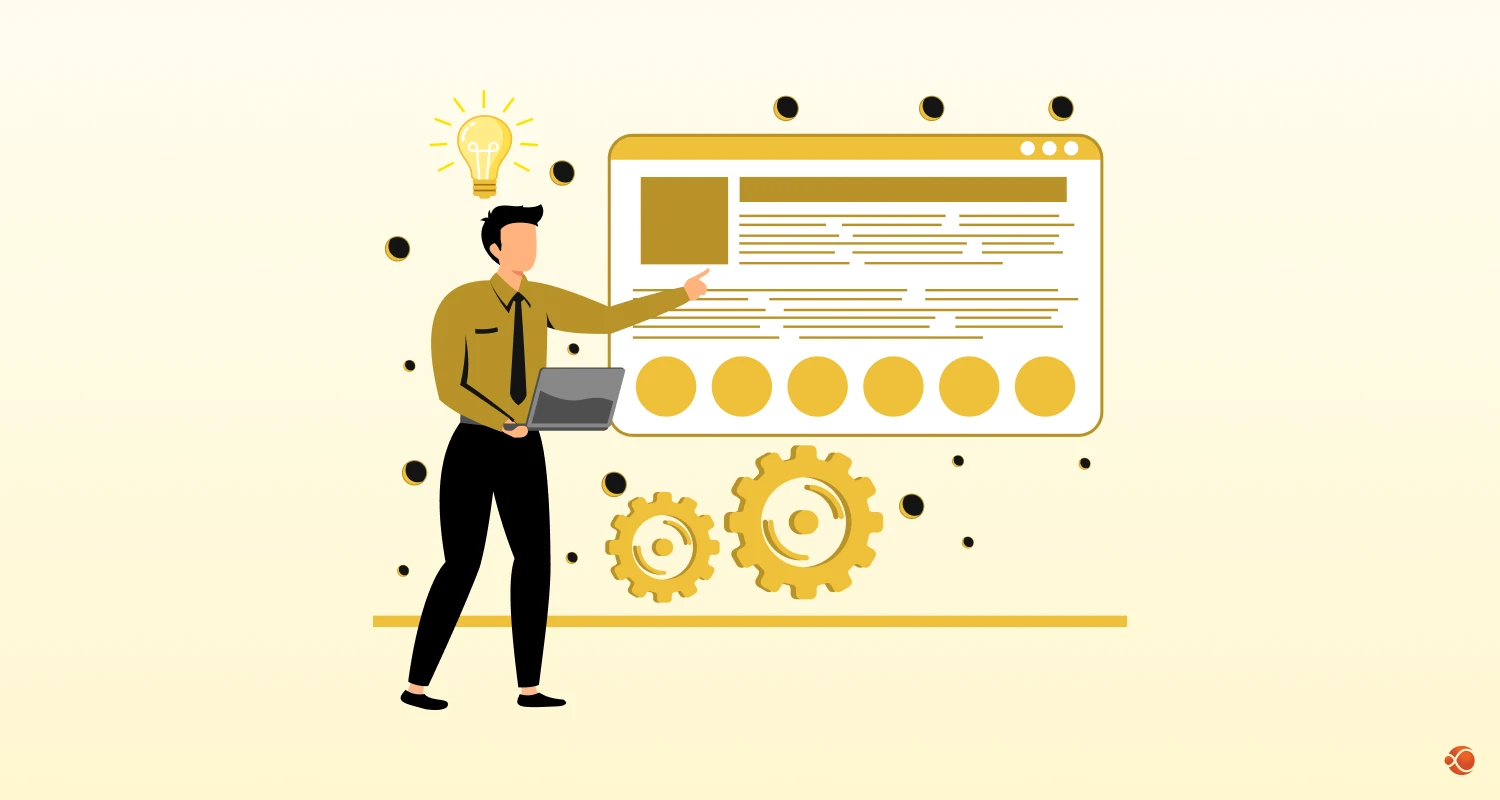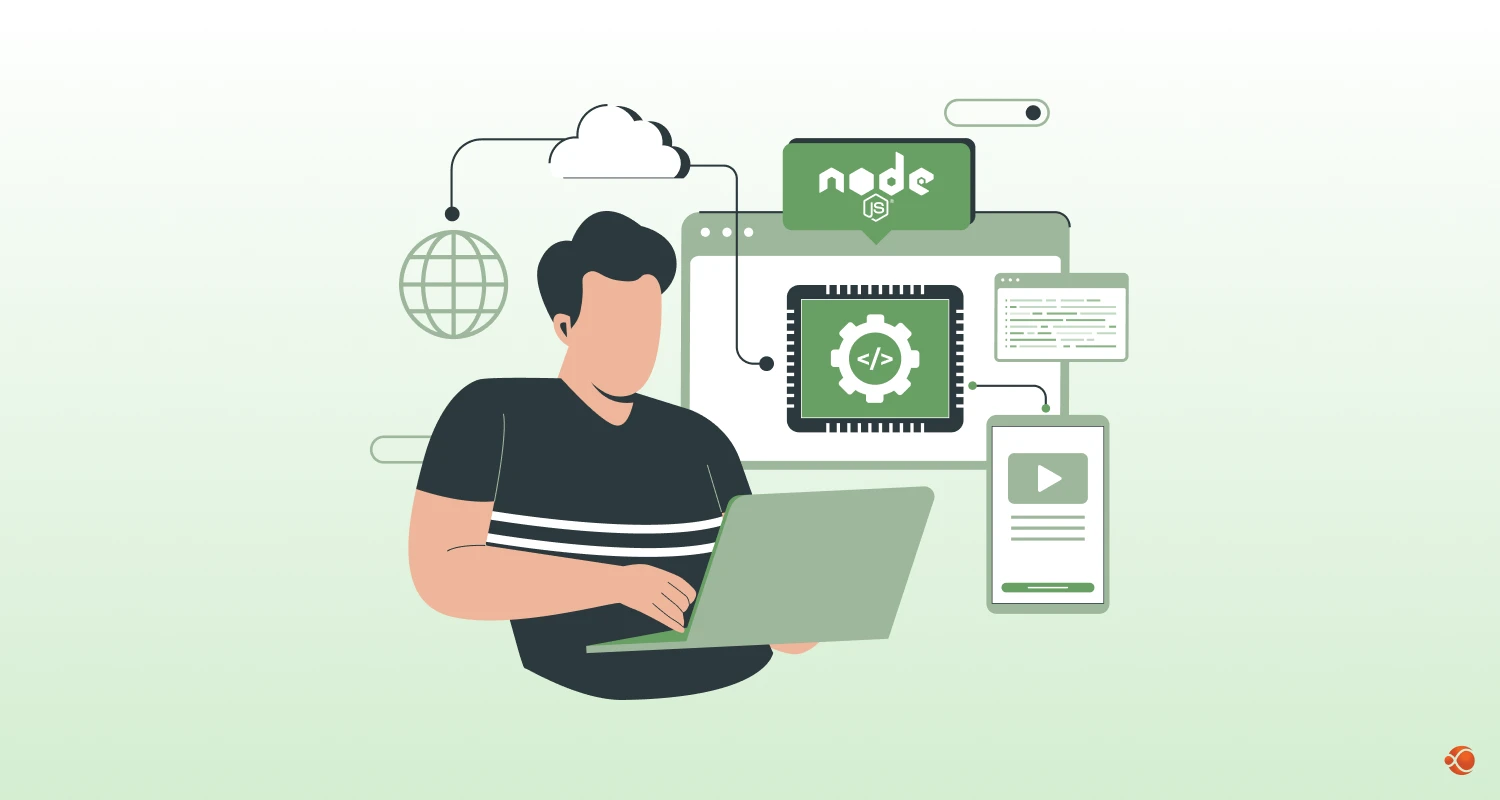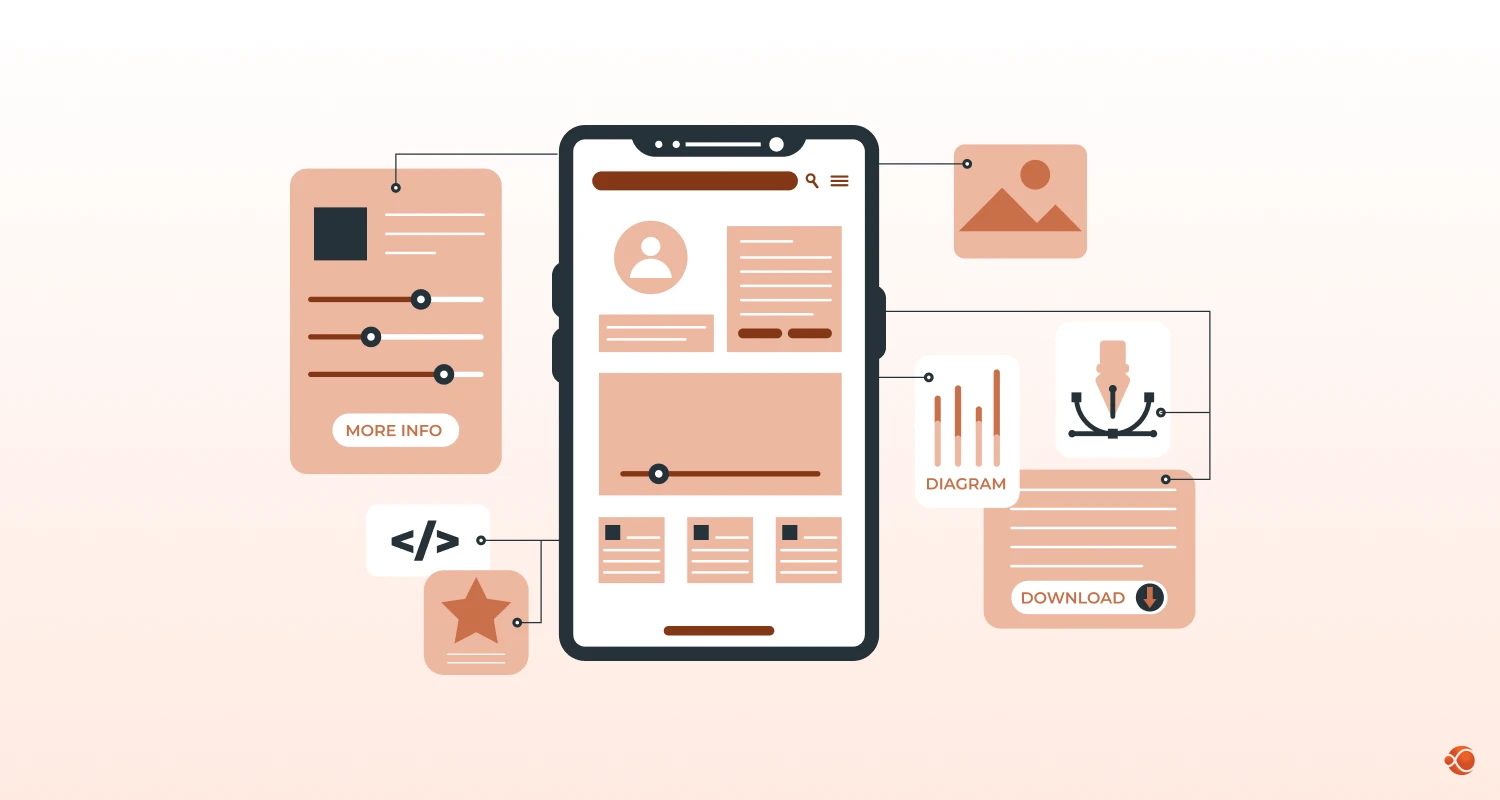Quick Summary: Are you struggling with rising energy costs, resource waste, or inefficient operations? AI and big data analytics are helping businesses fulfill their role towards sustainability and tackle challenges by optimizing systems, reducing emissions, and turning complex data into actionable sustainability strategies.
The rise of AI and big data in pushing innovation is undeniable. By analyzing vast amounts of information in real-time, businesses can uncover inefficiencies in their processes, predict future trends, and make informed decisions that align with their sustainability goals. From optimizing energy consumption to minimizing supply chain waste, AI and big data are transforming how organizations approach environmental responsibility. Let’s break down what key players in the industry are doing and have to say for this, and how different AI and big data technologies are bringing a whole new meaning and depth to sustainable innovation.
How AI and Big Data Work Together Towards Sustainable Innovation
The relationship between AI and big data is symbiotic. It is a significant shift from the traditional reactive environmental management. This technology uses machine learning algorithms, predictive analytics, and large datasets to develop intelligent systems that can anticipate, optimize, and automate sustainable practices across various industries.
Big data provides the volume and variety of information needed to understand complex sustainable challenges, whereas AI analyzes these data points to reveal actionable insights. This combination allows businesses to move beyond simple reporting and take more proactive, data-driven strategies for sustainability. It is found that AI has the potential to reduce global greenhouse emissions by up to 4% by 2030.
Transforming Energy Systems: AI in Renewable Energy Revolution
Smart Grid Optimization and Dynamic Energy Management
Modern electrical grids have evolved from a simple one-way power distribution system to AI-driven networks that can smartly manage energy flow in real-time. AI in renewable energy systems now functions like advanced traffic management systems for electricity.
Core Smart Grid Capabilities:
- Predictive demand forecasting based on weather, usage pattern, and economic factors.
- Automatic switching between renewable sources and traditional power sources.
- Proactive fault detection and system optimization before outages occur.
- Dynamic load balancing across regional and national grid networks.
Predictive Maintenance for Clean Energy Infrastructure
AI-powered predictive maintenance is transforming the upkeep of wind turbines, solar farms, and even hydroelectric systems. These systems collect data from sensors, IoT devices, and machine learning for real-time monitoring of equipment health.
Predictive Maintenance Capabilities:
- Continuous monitoring of temperature, vibration, pressure, and energy output data from sensors and IoT devices.
- Early identification of equipment stress, wear, or potential failures with AI-driven analytics.
- Fixing repair schedules to ensure zero or minimal downtime and extend equipment lifespan.
AI-Driven Sustainable Supply Chain Management
Supply chains are a major contributor to global emissions and resource utilization. By optimizing big data and sustainability strategies, companies can enhance logistics, production schedules, and procurement processes.
AI-Driven Use Cases in Supply Chains
- AI-driven demand forecasting presents overproduction and reduces waste.
- Supplier selection happens based on sustainability criteria and guidelines.
- Route optimization is a great way to reduce fuel consumption.
- Real-time monitoring of resource usage and carbon emissions can help maintain levels.
AI-Driven Product Design for Eco-Friendly Innovation
AI and big data are enabling product designs that are: more sustainable, resource-efficient, and environmentally conscious. With the right AI consulting services, advanced simulations and predictive analytics, companies can now test materials, reduce waste, and ensure recyclability. This shift weaves sustainability into innovation from the beginning.
Real-world Applications:
- Simulating material performance for identifying eco-friendly alternatives.
- Lifecycle assessment using predictive analytics and forecasting environmental impact.
- Optimizing designs for recyclability, energy, efficiency, and minimal waste.

Waste Reduction and Circular Economy Initiatives
Waste isn’t just trash; it actually affects a business’s revenue and operational safety. Many businesses used to follow a simple model: take resources, produce products, and discard the waste. But this approach is wasteful and costly.
Now, businesses are moving toward a circular economy. This means they reuse, recycle, and repurpose materials to keep them in use for as long as possible. Instead of throwing things away, they find new ways to use old products or materials. Generative AI integration services can simulate thousands of energy distribution scenarios, helping smart grids dynamically balance renewable and traditional energy sources while minimizing waste and emissions
Key Aspects of Waste Reduction and Circular Economy:
- Businesses can extend the lifecycle of products and reduce reliance on raw resources.
- Waste reduction improves operational safety and lowers environmental impact.
- Circular strategies open opportunities for new revenue streams through refurbished, recycled, or repurposed products.
Data-Driven Policy and Corporate Sustainability Decisions
AI and big data analytics for sustainability support decision-making at both government and corporate levels. Companies and regulators can hire AI developers to analyze their energy consumption and resource use to design actionable sustainability strategies.
Data-Driven Policy and Corporate Sustainability Decisions
- Governments design better regulations using AI and big data to cut emissions.
- Energy use and resources are tracked by companies to spot where improvements are needed.
- Predictive analytics forecasts future environmental impact and guides planning.
- Investments in renewable energy and efficient operations are driven by data insights.
- Sustainability reports are made clearer and more transparent for stakeholders.
Industry-Specific Applications of AI and Big Data

The transformative power of AI and big data extends across various industries. This helps businesses reduce their environmental impact while optimizing their operations, creating long-term sustainable business models. By leveraging predictive analytics, machine learning, and IoT data, companies can develop actionable solutions that enhance their business systems.
The energy sector is a prime example of how to use AI for environmental sustainability. Modern electric grids are using AI for predicting energy demand, balancing renewable and conventional sources, and detecting faults before they are able to cause any disruptions. Predictive maintenance and real-time monitoring extend the life of wind turbines, solar panels, and hydroelectric systems, while reducing energy waste.
Manufacturing and Supply Chain
Manufacturing and logistics are one of the major contributors to carbon emissions. The role of AI and big data in optimizing flow and production processes has been a significant trump card in changing things around. Demand forecasting minimizes overproduction, supplier selection takes sustainability as the key consideration, and route optimization helps reduce fuel consumption. These approaches enable the creation of sustainable business models with AI, which enhance operational efficiency while reducing environmental impact throughout the supply chain.
Transport and Logistics
Transportation is a leading source of global emissions. According to IEA (International Energy Agency), the transportation sector accounts for more than a third of CO2 emissions from end-use sectors. Fleet routing optimization, predictive vehicle maintenance, and efficient management for electric or hybrid vehicles are all examples of how we can cut fuel usage and emissions.
Agriculture and Food
Agriculture is one of the most essential industries that we need to protect globally. However, it also brings forth most challenges towards sustainability as it consumes vast amounts of water, fertilizers, and energy. AI-driven environmental solutions provide the agriculture industry and farmers with precision farming, optimizing irrigation, and predicting crop yields. By checking the soil health, such systems are able to early detect pests and nutrient deficiencies that reduce chemical usage and waste. Getting professional agriculture software development services can help farmers improve output while implementing AI for sustainability in food production.
How Tech Giants Are Using AI and Big Data For Sustainability
Many enterprises have been actively integrating AI and big data into their operations to promote a sustainable future. Here are a few big names and their approach to using AI and data for long-term sustainability:
| Tech Giant | Sustainable Innovation Initiatives |
| Google & DeepMind | AI-powered cooling system for data centers, reducing energy consumption by 40%, significantly lowering carbon footprint. |
| Microsoft | AI for Earth Initiative: Using AI and machine learning for biodiversity conservation, satellite-based deforestation tracking, and optimizing water usage in agriculture. |
| Amazon | AI-driven route optimization for logistics, improving fuel efficiency, and reducing carbon emissions across its delivery network. |
| Siemens | AI-powered smart grid management, optimizing energy distribution, and supporting decarbonization efforts through real-time data and digital twins. |
1. Google and DeepMind: Optimizing Data Center Cooling:
Data centers have enormous energy consumption requirements, especially because of the power needed to cool the systems. Google collaborated with DeepMind for deploying an AI-powered cooling system that can manage its data centers more efficiently. It uses neural networks for analyzing vast amounts of data, including feather forecasts, server loads, and cooling system performance.
AI can predict and make adjustments for fixing the issues of cooling systems in real-time. The result of this collaboration was achieving a 40% reduction in enemy consumption for cooling their systems, thereby reducing carbon footprint majorly.
2. Microsoft AI for Earth Initiative
Microsoft has a private project named AI for Earth, launched back in July 2017. They have allocated a $50 million budget for this program, showing their commitment to AI and sustainable innovation.
One of the key focuses of their initiative is on using AI and machine learning to improve biodiversity conservation and climate change mitigation. One of their sub projects uses machine learning to analyze satellite imagery to detect and map land use changes, for helping with deforestation. Another project applies AI to agricultural data for helping farmers optimize water use and crop yields.
3. Amazon Logistics and AI-Driven Route Optimization
Amazon has a massive logistics and delivery network that is a high-source of emissions. To combat this, the company makes use of AI and big data for optimizing its delivery routes, a process that is key to reducing fuel consumption and carbon emissions. AI algorithms analyze real-time data on traffic, weather, and delivery locations, for finding the most fuel-efficient routes for its fleet.
4. Siemens and Smart Grid Management
Siemens is a global leader in industrial technology and invests and focuses a lot on digital solutions. It uses AI to develop smart grid management systems that optimize the distribution of energy. This is important for meeting their decarbonization goals, and their entire approach is based on AI for real-time data, optimize operations, and creating digital twins for the grid.
Why Choose CMARIX for Responsible AI and Big Data Implementation
As the demand for AI and big data solutions grows in scale, so does the need for a development partner that can prioritize both: innovation and responsibility. At CMARIX, we build powerful, data-driven systems that embed ethical and sustainable practices in all our AI software development services.
Key Aspects of CMARIX towards Responsible AI and Big Data Implementation
- Ethical AI Governance: All our AI-based projects undergo thorough ethical frameworks for bias detection and mitigation. We make sure your AI models remain fair and equitable at all times.
- Security and Compliance: We implement robust security protocols according to the sensitivity of the data involved. By utilizing multi-layered encryption, access controls, and adhering to industry regulations, our big data services ensure that they don’t compromise the privacy or security of our customers.
- Build for Scalability: We design AI solutions to be powerful and efficient. Every detail is fine-tuned so they run smoothly as needs change. By utilizing distributed computing and cloud-based systems, energy consumption is reduced while maintaining sustainability goals on track.
Final Words
The partnership of AI and Big Data is a powerful catalyst that is redefining and powering the wave of sustainable innovation. This technology duo is transforming industries from reactive to proactive environmental strategies, offering more benefits of optimizing for sustainability and motivating companies to implement such practices voluntarily, rather than being compelled to do so.
FAQs on Role of AI and Big Data for Sustainable Innovation
What Industries Benefit the Most From Ai-Powered Sustainability Solutions?
The energy sector gains a huge advantage as AI predicts demand, balances renewable sources, and prevents wastage. Manufacturing also benefits by reducing material waste and optimizing production schedules. Even agriculture is seeing the use of AI for precise irrigation and crop management, which dramatically cuts water use and chemical usage.
How Can Big Data Help Reduce Environmental Impact?
Big Data reveals patterns in energy use and resource consumption that are often overlooked. Companies can use these insights to adjust their processes or supply chains and reduce waste. Governments and organizations can also monitor emissions trends and take action early, thereby preventing damage rather than having to fix it later.
What Role Does AI Play in Building Smart, Sustainable Cities?
AI turns urban infrastructure into a smart and responsive system. All traffic amenities like traffic lights, public transportation, and electricity flow are now adjusted in real-time. It identifies spot water leaks, creating a self-sustaining city.
What Future Trends Will Shape AI and Big Data in Sustainable Innovation?
We are moving towards edge AI. It allows us to make instant decisions without relying on central servers. Circular economy solutions are also on the rise, where waste from one process becomes a resource for another, all coordinated by smart algorithms. Predictive analytics will increasingly guide not just business but policy decisions for sustainability.
What Are Examples of AI in Renewable Energy and Resource Management?
Powering wind turbines and solar panels with AI, they can be further optimized for efficient forecasting. Smart grids can distribute energy where it’s needed most, cutting dependencies on fossil fuels. AI also helps track water usage in large irrigation networks. This prevents overconsumption and preserves vital resources.
How Can AI Help With Sustainability?
AI can pinpoint exactly where energy or resources are being wasted. Teams can then follow targeted interventions. It can optimize logistics, reducing the need for fewer trucks, ships, or planes, thereby lowering emissions. In the bigger picture, it turns massive streams of data into actionable insights that guide companies toward greener practices.







